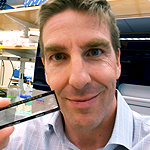GBA Pathway markers for Lewy body dementias (U01)

Summary
An enzyme (beta-glucocerebrosidase, encoded by the GBA gene) controls the production of critical brain lipids (or fats), the sphingolipids, which are important for membranes and function of brain cells. Defects in this GBA pathway are connected to a build up of a protein (alpha-synuclein), which forms tiny spheres (Lewy bodies) that are scattered throughout the brain of a substantial number of people with memory loss (Lewy body dementia, short LBD). Drugs designed to correct this pathway are under development for clinical trials. A tool kit of tests is needed to accompany such drugs. Such tests should help to tell whether the new treatments are working.
In the first goal of this project, we will determine, whether this GBA pathway is abnormal in blood and cerebrospinal fluid (an accessible liquid surrounding the brain) of hundreds of individuals with Lewy body dementias, healthy people, and participants with other types of dementia. In the second goal, we will analyze, whether biomarkers (biological tests) for the GBA pathway can track disease progression in Lewy body dementias over time. Moreover, we will collect clinical data, cerebrospinal fluid, and blood samples of these patients and controls from Harvard-affiliated hospitals. We will share the patient samples and clinical data with scientists around the nation through the biorepository and website of the NIH NINDS PDBP.
This study is designed to translate clues from the GBA pathway into biomarkers for clinical drug trials for patients with Lewy bodies and memory loss. It will create a prototype tool kit of tests for innovative, genetics-inspired, biomarkers-guided phase II trials for this major cause of memory impairment.